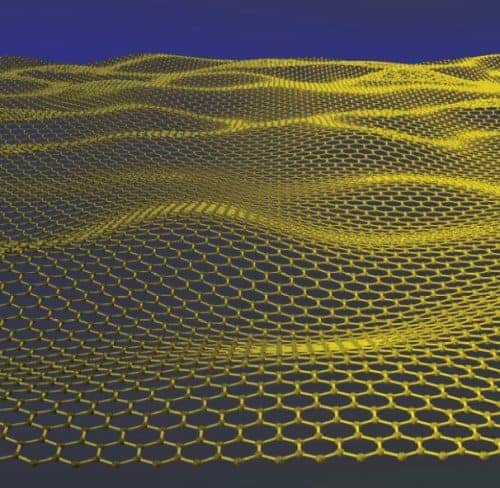
An international team of physicists has discovered that electrons move much more easily through graphene than any other known material. Their findings strengthen the belief of some researchers that graphene — which is a 2D sheet of carbon just one atom thick and a semiconductor — might be the best material for making electronic devices of the future.
Intrinsic electron mobility is a measure of how easily electrons move in a substance and boosting mobility is one way of making semiconductor devices smaller and run faster.
Now, André Geim of Manchester University and colleagues in Russia, the Netherlands and the US have found that the intrinsic mobility of graphene was around 200,000 cm2/Vs (Phys. Rev. Lett. 100 016602). This value is more than 100 times higher than that of silicon and over 20 times higher than gallium arsenide (1500 and 8500 cm2/Vs repectively).
“Our result is also counterintuitive,” Geim told physicsworld.com. “Scientists know that the thinner you make a material, the dirtier and less conductive it becomes. Graphene, which is a 2D sheet of carbon just one atom thick, is ultimately thin but has a higher electronic quality than any known material.”
Our work thus singles graphene out as the best possible material for electronic applications André Geim, Manchester University
Graphene is normally not perfectly flat but instead has a corrugated appearance and these corrugations vibrate as the graphene warms up. By measuring mobility as a function of temperature, the team concluded that scattering from these vibrations reduced the mobility of electrons at higher temperatures.
Its high intrinsic mobility (or electronic quality as it also known) means that graphene is the only material where electrons at room temperature can move thousands of interatomic distances without scattering. Geim said that although he knew that electrons in graphene could move long distances (longer than in conventional semiconductors), he did not expect that the material could outperform carbon nanotubes in this respect — or indeed the current record holder indium antimonide. “Our work thus singles graphene out as the best possible material for electronic applications,” he stated.
The researchers say that the intrinsic mobility could go even higher if the impurities in graphene were cleaned up — and if the corrugations could be removed. However, Geim stresses that mobilities any higher than around 20,000 cm2/Vs are not really needed for applications, like transistors, for example. However, cleaner samples with higher mobilities would come in very handy for fundamental research.
The high mobility value also means that graphene could be used to make devices that operate in the the terahertz region of the electromagnetic spectrum — something that is very difficult today. Terahertz radiation is important for a range of applications, including security and defence, medicine, astronomy and biological research. Terahertz radiation penetrates many materials (except metals) and so can be used to “see” through clothing and packages at airports, for instance.
Geim believes that graphene-based devices like chemical sensors and terahertz sources and detectors could be made within three to five years. However, two big challenges still need to be overcome before applications like graphene logic circuits see the light of day. First, high-quality wafers of the material need to be made and second, its on-off ratios are presently too low. “I have no idea when or even if these two hurdles could be circumvented,” he said.



